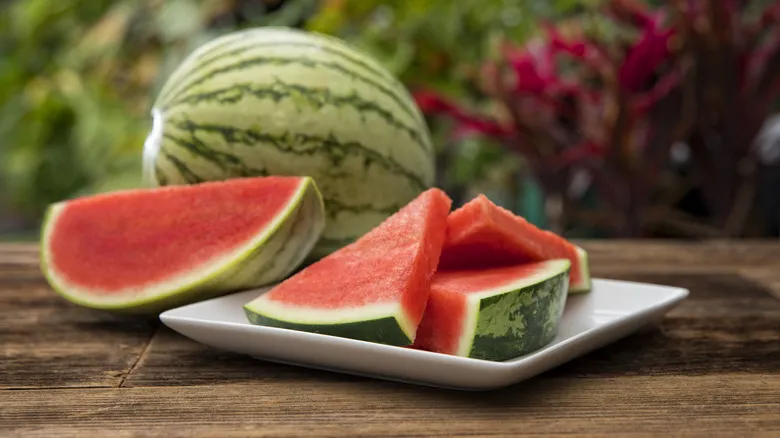Start by checking the weight and shape
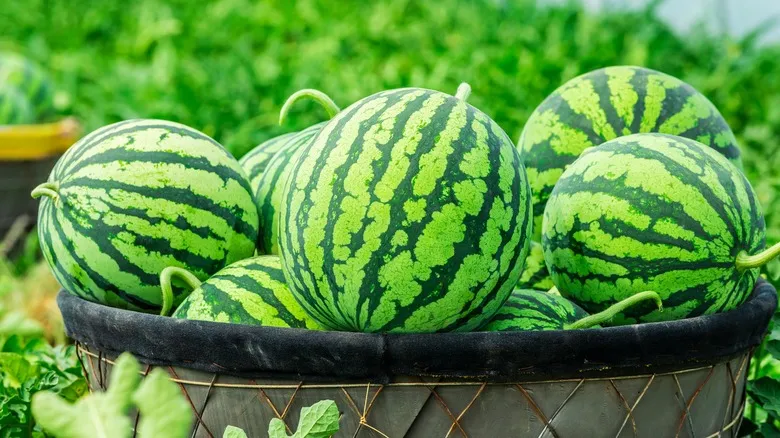
When selecting watermelons at the grocery store, the primary traits to distinguish the good ones from the bad are weight and shape. A ripe watermelon should feel substantial; aim for one that seems significantly heavier than it appears. This heaviness suggests that the fruit is filled with sweet juice.
Regarding shape, watermelons can be either round or oval depending on the variety, so that aspect is less important. Instead, focus on symmetry. Choose a watermelon that is evenly shaped on all sides. If one side appears larger or rounder than the other, it may indicate uneven watering during its growth. This asymmetry can also suggest improper pollination, which is a common issue with seedless varieties.
Additionally, look for a smooth, consistent surface on the melon. Irregularities or lumps may indicate internal discoloration, and any cuts or dents could suggest damage from pests or fungi. Lastly, avoid melons that are pointed at the ends, as this is a sign that they are not fully ripe.
Examine the melon rind closely
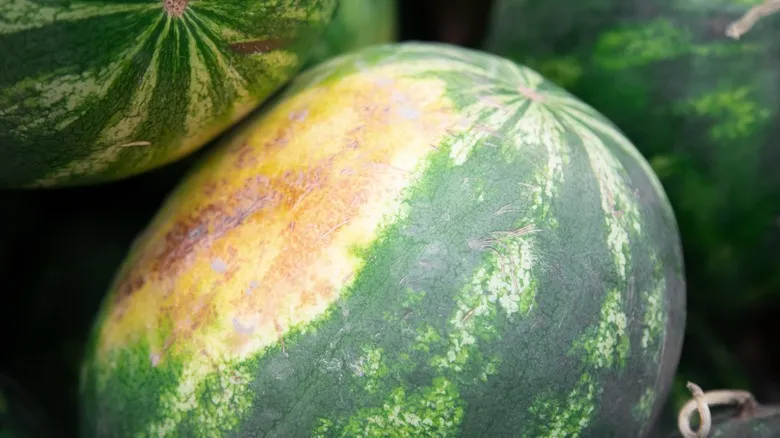
A perfectly ripe watermelon should exhibit a dark green, matte exterior. At the top of the melon, you’ll notice the remnants of the stem that once connected it to the vine, referred to as a tendril or tail, which should be completely dry and brown. If the tail remains green, it indicates that the watermelon was harvested before it had the chance to fully ripen.
On the underside of the melon, look for a patch of yellow skin known as the field spot. This is a crucial characteristic to assess when determining ripeness. As a watermelon ripens, its weight causes it to rest on the ground, leading to a gradual color change in the part of the rind that touches the soil, turning a dark yellow or orange. A visible field spot signifies that the watermelon remained on the vine long enough to ripen properly. Conversely, the absence of a field spot or a white field spot suggests that the melon was picked too early.
Finally, check for areas of crisscrossed scratches on the surface of the melon, known as webbing. While this feature is more commonly associated with ripe cantaloupes, it can also be an important indicator for watermelons. These scratches are remnants from pollinators, and a greater amount of webbing typically suggests a sweeter fruit.
Give it a thump
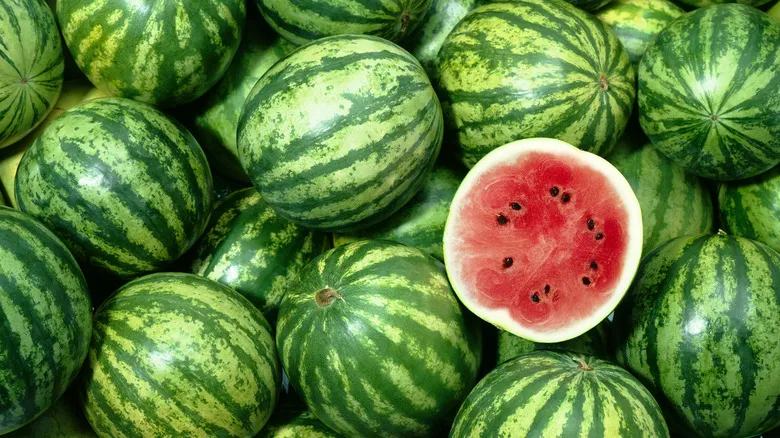
You can also utilize your ears to assess the quality of a watermelon through the thump test. This method is straightforward: simply pick up the melon, bring it close to your ear, and tap on its sides. If the sound produced is a low, hollow tone, it suggests that the watermelon is ripe. Conversely, a higher-pitched sound indicates that it hasn't fully ripened yet.
While the thump test is a widely used technique for determining watermelon ripeness, it may not be the most reliable method available. The auditory difference between a ripe and an unripe watermelon can be quite subtle, making it challenging to detect. Additionally, it is somewhat subjective, as individual interpretations of what constitutes a thump versus a tap can vary. Considering the field spot test might provide a more effective alternative.
How to identify a bad watermelon
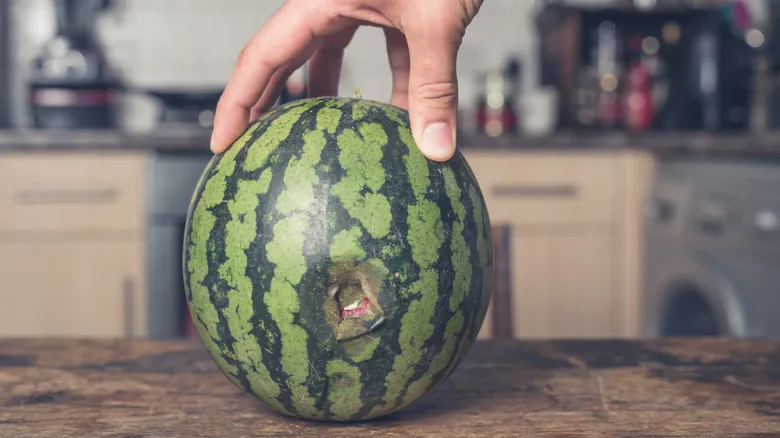
When looking for a quality watermelon, it's important to be aware of certain traits to avoid. Key indicators include a white field spot, the absence of a field spot, an uneven surface, and a high-pitched sound. Additionally, there are other signs that can help you spot overripe or spoiled watermelons. As you examine a melon, press on the rind to assess its firmness; it should feel thick and solid. If the rind gives when you press it, that indicates the watermelon is overripe. Overripe melons tend to lose their sweetness and develop an unpleasant texture that is both mealy and slimy.
Inspecting the exterior of a watermelon can also reveal potential spoilage or pest issues. Any visible mold on the melon is a definite warning sign. A quick sniff can also be helpful; a sour odor may indicate that the flesh is fermenting. Finally, look for light brown patches on the surface, which suggest that insects have been feeding on the fruit. Cutting into a watermelon with these signs could lead to an unpleasant surprise.
Recommended

The Reason Your Grocery Store's Dairy Aisle Is In The Back Left Corner
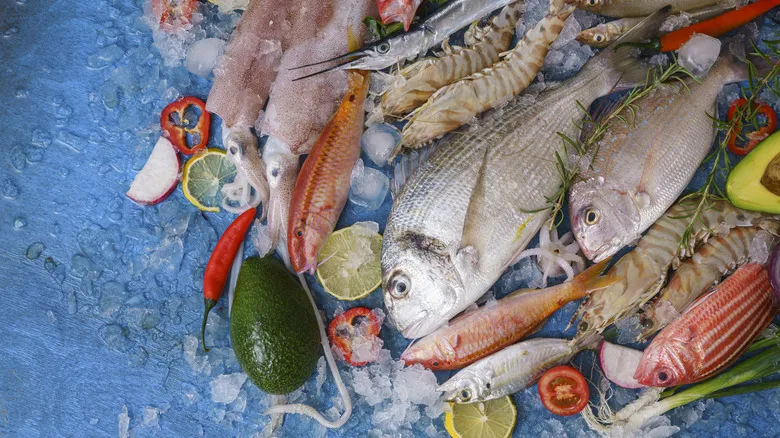
The Biggest Mistakes You Make While Buying Seafood According To A Fishmonger

2 Label Clues To Find The Best Butter At Your Grocery Store

What To Know Before You Add Someone To Your Costco Card
Next up

